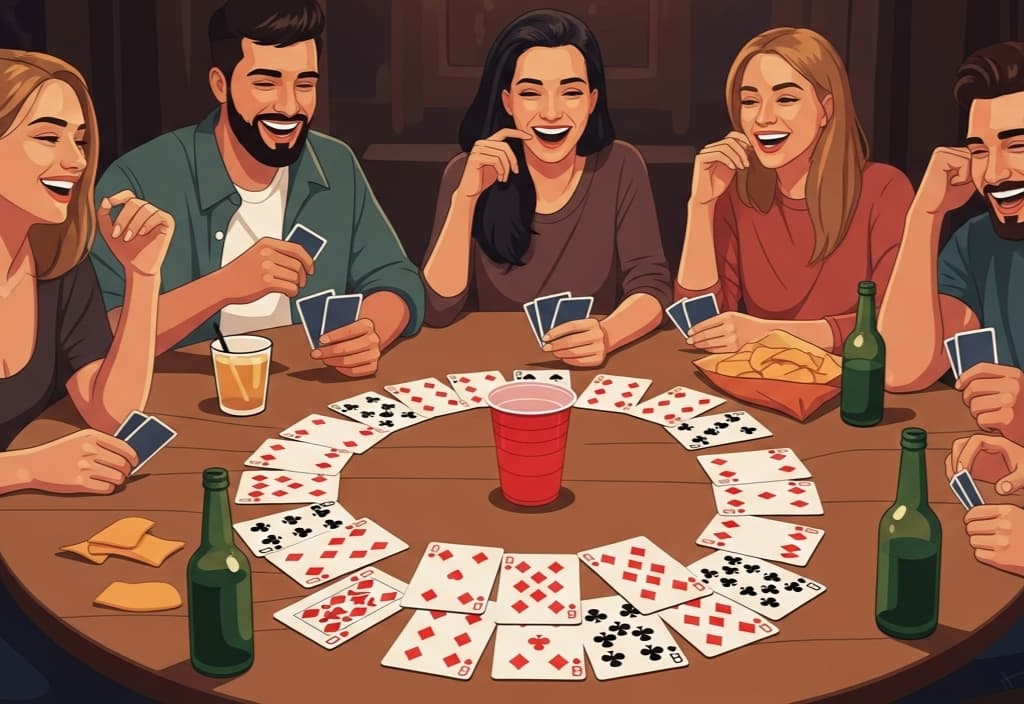Introduction: When a Tarot Reading Leaves You Hanging
Imagine this: you’re doing a reading about a decision you’re struggling with. You flip the cards, hoping for clarity, and instead, you get a vague message or a card that feels completely off. Now what? This is where a clarifying card can become your best friend.
In the world of tarot, clarity is everything. But sometimes, readings need a little nudge. If you’ve ever walked away from a reading feeling more confused than when you started, you’re not alone. Clarifying cards exist to deepen understanding, sharpen focus, and provide insight that your original spread may not have fully captured.
This guide is your go-to resource for answering the question, What is a clarifying card in tarot? We’ll break down their purpose, when to pull one, how not to overuse them, and the subtle art of reading them in context. Whether you’re brand new or refining your practice, this article will help you use clarifying cards confidently and wisely.
1. What Is a Clarifying Card in Tarot?
A clarifying card is a single card pulled after your main tarot spread to gain more insight into a specific part of your reading. Think of it as a follow-up question to ask the tarot deck, “Can you explain this part a little more?”
The need for clarification usually arises when a card’s meaning feels ambiguous, contradictory, or emotionally charged. A clarifying card does not replace the original message. Instead, it enhances it, offering nuance and context that may not have been immediately obvious.
For example, imagine you pulled the Three of Swords in a relationship reading. Pain and heartbreak, sure. But what kind? Past or present? You pull a clarifying card and draw the Six of Cups. Now it clicks: the heartbreak is tied to childhood memories or a past love. That one extra card reshapes the whole emotional tone.
But here’s the catch: clarifying cards should be used thoughtfully. Too many, and you risk clouding your intuition rather than sharpening it.
2. Why Do Some Tarot Readings Need Clarification?
Tarot is an intuitive tool, but the cards’ meanings can be layered and complex. Sometimes a card will speak clearly, other times it feels like it’s whispering in a foreign tongue.
Here are a few common scenarios where clarification may be helpful:
- You receive a court card without context. Is the Knight of Swords referring to you, or someone else?
- The card contradicts your question. In a reading about grief, the Sun may feel out of place until it is clarified.
- Multiple cards have similar energy. You should break the monotony and find what’s unique.
- You think an intuitive nudge to pull one. Often, your body knows before your mind catches up.
Clarifying cards are not for second-guessing the spread. They’re for diving deeper when a specific card feels like it’s only telling half the story.
3. The Art of Choosing When to Clarify (And When Not To)
Pulling a clarifying card should feel intentional, not automatic. Just because a reading is emotionally charged or not what you hoped to hear doesn’t mean it needs more cards. Pulling extra cards out of impatience can dilute the potency of the message.
Here’s a good rule of thumb: if a card brings up a strong reaction (positive or negative), sit with it before clarifying. Often, the insight is just under the surface.
Still feel stuck? Try journaling your interpretation first. Then, if the meaning remains unclear, pull a single clarifying card and ask a focused question like:
- “What is the energy behind this card?”
- “What is this trying to teach me?”
- “What blocks or influences are affecting this situation?”
4. How to Pull a Clarifying Card the Right Way
Pulling a clarifying card isn’t just about drawing another card. It’s about asking the right question, being in the right mind, and approaching it respectfully.
Step-by-Step Guide:
- Pause and reflect on the original card. What do you already know?
- Form a straightforward, specific follow-up question. Keep it concise.
- Shuffle the deck with your new question in mind. Stay centred.
- Draw one card only. Trust what comes up.
- Interpret it within the context of the original card. Avoid isolating the clarifier.
Remember: the clarifier doesn’t speak louder than the original card. It supports it.
5. Examples of Clarifying Cards in Action
Let’s walk through a few mini case studies to see how clarifying cards work in real-world readings.
Case 1: The Career Dilemma
Spread Result: Two of Pentacles
Clarifying Card: Eight of Swords
Interpretation: The querent is juggling two job options but feels mentally trapped. The clarifier reveals that it’s not the jobs causing stress; it’s her fear of making the wrong choice.
Case 2: The Romance Mystery
Spread Result: The Lovers
Clarifying Card: Ten of Wands
Interpretation: This relationship is not just about passion. There’s a burden the querent is carrying, possibly emotional baggage. The clarifier adds weight to what looked like a purely romantic card.
Case 3: The Emotional Fog
Spread Result: Five of Cups
Clarifying Card: Page of Pentacles
Interpretation: Grief is present, but there’s also potential for new beginnings. The clarifier suggests a path forward. Something grounded and practical is within reach.
These examples show how one card can completely reframe a reading without overpowering it.
6. Common Mistakes to Avoid With Clarifying Cards
Even experienced readers can fall into some of these traps. Awareness is the first step to avoiding them.
Mistake 1: Pulling too many clarifiers
This muddles the reading and creates analysis paralysis. One well-placed card is usually enough.
Mistake 2: Using clarifiers to avoid brutal truths
Sometimes we keep pulling because we don’t like the answer. Clarifiers should not become a way to escape reality.
Mistake 3: Disregarding the original card
The first card still holds the main message. Never let a clarifier override or contradict it without good reason.
Mistake 4: Asking vague follow-up questions
If your question isn’t straightforward, your clarifier won’t be either.
Mistake 5: Using clarifiers as a crutch
They’re a tool, not a necessity. With practice, your intuition can decode even the murkiest spreads without extra help.
7. How to Choose a Significator Card in Tarot (And Why It Matters Here)
Before even pulling clarifiers, many readers use a significator card to represent the querent or the situation. Choosing the right one can sharpen your focus and reduce the need for clarifying cards later.
For example, the Queen of Cups could work if the querent is a mature, nurturing woman. Or if the question is about finances, the King of Pentacles might serve as a strong, energetic anchor.
A well-chosen significator card:
- Grounds the reading
- Helps you connect emotionally with the question
- Clarifies roles within spreads
Some readers let the card fall naturally, while others select one based on traditional meanings. Both methods can work, as long as they align with your intention.
8. Clarifying Cards vs. Rephrasing the Question
Sometimes you don’t need a new card. You need a new question.
If your reading feels cloudy, consider whether your original question was too vague, broad, or emotionally charged. In many cases, setting the cards aside and rewriting your question can do more for clarity than a clarifier ever could.
For instance, instead of asking, “Will he come back?”, rephrase “What do I need to understand about this connection right now?” That shift invites more profound wisdom and usually results in more insightful spreads.
9. Tarot Card Meanings Still Matter — But Context Is Queen
Learning tarot card meanings is foundational. But applying them in real time requires context, intuition, and emotional fluency.
Let’s take the Seven of Swords. Alone, it may suggest deception. But clarified with the Nine of Wands, it might mean someone is secretive for self-protection: same card, different tone.
Don’t rely solely on keyword memorisation. Instead:
- Look at imagery
- Pay attention to patterns
- Trust your gut impressions
Clarifying cards don’t replace the need for solid knowledge of tarot card meanings. They build on it.
10. When to Trust Your Gut Instead
Tarot is both science and soul. You can study meanings, practice spreads, and analyse symbolism, but your intuition is the compass at the end of the day.
Before pulling a clarifying card, pause. Ask yourself, “Do I already know what this is saying, deep down?” Often, we do. Reaching for another card is easier than sitting with the emotional truth.
Cultivating trust in your intuitive voice will do more for your readings than any amount of clarifiers ever could.
While clarifying cards in tarot deepens intuition and emotional insight, card-based games like Cards Against Humanity show how decks can spark connection, laughter, and storytelling in social settings. It’s fascinating how both spiritual and recreational card formats use symbols to evoke meaning in very different ways.
Explore these party games like Cards Against Humanity to see the lighter, playful side of what cards can do.
Final Thoughts: Clarity Comes With Practice
Tarot is a lifelong relationship. You won’t master it in a day, and that’s the beauty of it. The more you engage, the more precise your inner voice becomes.
Clarifying cards can be powerful tools, but they are not shortcuts. They’re invitations to look deeper, ask more powerful questions, and trust what is slowly being revealed.
So the next time a card throws you off or leaves you scratching your head, remember: it’s not a wall. It’s a doorway. And a clarifying card might be the key to walking through.
Pick one tip above that truly resonates with you. Then scroll back, re-read its steps, and apply just one small action today. That’s how absolute clarity begins, with one tiny win at a time.
FAQs: Clarifying Cards in Tarot
Can I pull more than one clarifying card?
It’s best to limit yourself to one. More than that can create confusion and diminish the original message.
When is it inappropriate to use a clarifying card?
If you’re using it to escape an uncomfortable truth or to force a preferred outcome, it’s better to pause and reflect instead.
Are clarifying cards used in professional readings?
Absolutely. Many seasoned readers use them, especially when explaining complex spreads to clients. The key is moderation.
Should I always use a significator card before reading?
Not always, but it can help, especially when you want to personalise a reading or focus the energy on a specific person or situation.
Can clarifying cards change the meaning of the reading?
They can add depth or shift the tone, but should not override the original card unless the context strongly supports it.




